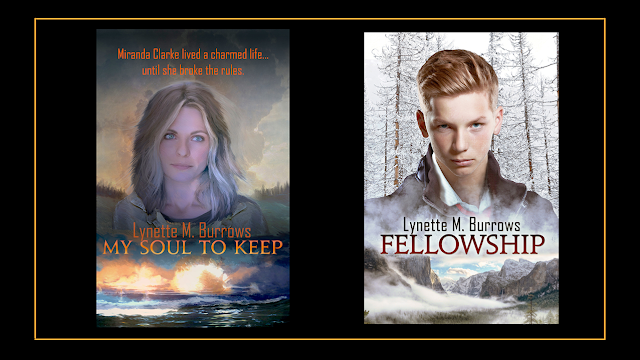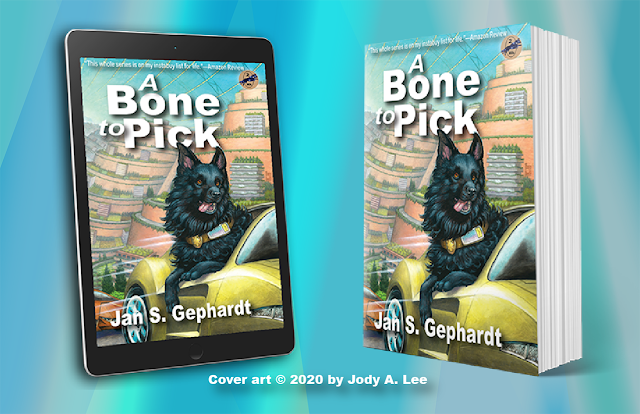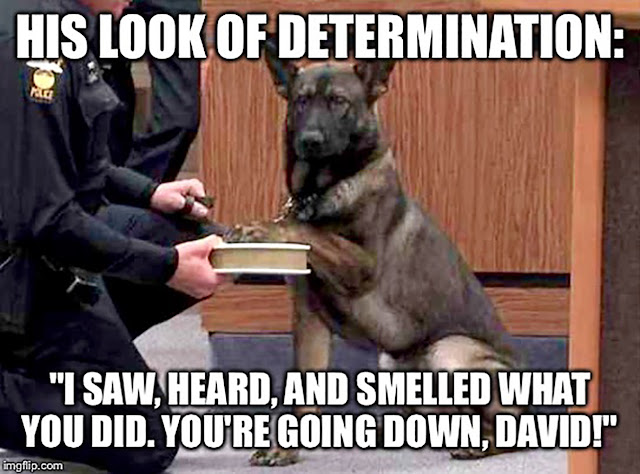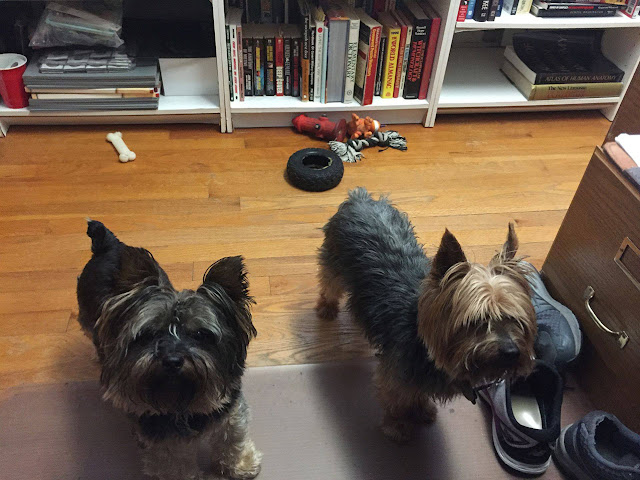By Jan S. Gephardt and Lynette M. Burrows
A note from Jan to her readers: My longtime friend Lynette M. Burrows and I belong to some of the same writers’ groups, and first met through the Kansas City Science Fiction & Fantasy Society (KaCSFFS). We bonded over (among other things) our interest in writing, and we’ve been friends literally for decades. We regularly check in with each other to “talk shop” or be each others’ cheerleaders. Earlier this summer, I suggested we co-write a post in which we talk about writing, our personal writing journeys, and our books. This post is the result of that conversation.
Before we Talk about Writing, Who is Lynette M. Burrows?
 |
| From Rocket Dog Publishing. Cover artwork for My Soul to Keep is © 2018 by Elizabeth Leggett. Cover artwork for Fellowship is © 2019 by Nicole Hutton at Cover Shot Creations. |
Lynette M. Burrows loves hot coffee, reading physical books, and the crack of a 9mm pistol—not all at the same time, though that might be fun! She writes thrilling science fiction for readers who love compelling characters with heroic hearts.
The White Box Stories, which she co-wrote with Rob Chilson, appeared in Analog Science Fiction/Science Fact Magazine.
Her series, The Fellowship Dystopia, presents a frightening familiar American tyranny that never was but could be. In Book One, My Soul to Keep, Miranda discovers dark family secrets, the brutality of the Fellowship way of life, and the deadly reality of rebellion. My Soul to Keep and the series companion novel, Fellowship, are available at most online bookstores. Book two, If I Should Die, will be published in 2022.
Owned by two Yorkshire Terriers, Lynette lives in the land of Oz. You can find her online at her website, on Facebook, or on Twitter @LynetteMBurrows.
Who is Jan S. Gephardt?
 |
| Covers courtesy of Weird Sisters Publishing. Cover artwork, L-R © 2020 by Lucy A. Synk, © 2019 and 2020, respectively, by Jody A. Lee. |
Jan S. Gephardt commutes daily between her Kansas City metro home in the USA and Rana Station, a habitat space station that’s a very long way from Earth and several hundred years in the future.
She and her sister G. S. Norwood are the founders and co-owners of Weird Sisters Publishing LLC. Her XK9 “Bones” Trilogy and its prequel novella, The Other Side of Fear, feature a pack of super-smart, bio-engineered police dogs called XK9s. They struggle to establish themselves as full citizens of the space station where they live, while solving crimes and sniffing out bad guys.
The Other Side of Fear tells how the XK9s and their humans found each other. What’s Bred in the Bone begins the tale of XK9 Rex, a dog who thinks too much and then acts on his thoughts. Even after his human partner Charlie is injured and out of the picture. A Bone to Pick was just released last month. In it, Rex and the Pack have new and different problems, even before Rex’s enemy from the past comes gunning for him. Jan’s now working hard on Bone of Contention, in which the dogs must prove to a critical panel of judges that they are truly sapient, before the Transmondians manage to exterminate their kind completely.
Now, let’s Talk about Writing!
Lynette and I developed a list of questions, then each of us answered them. The rest of this post continues in a Q&A format. We hope you’ll enjoy this “conversation,” in which a pair of BFFs talk about writing!
What’s your most recently- or imminently-to-be-published title? What’s it about, and when/how/where can readers find it?
LYNETTE
 |
| Banner and cover for Fellowship courtesy of Lynette M. Burrows on Twitter. |
Fellowship, a companion novel to the Fellowship Dystopia, series, is my most recently published title.
Two years before Miranda begins her journey, tragedy shatters a high school senior’s dreams of being a journalist when his parents are Taken by the Angels of Death. Hunted by government agents, Ian and his younger siblings run for their lives. He leads them to the Appalachian Mountains. He knows how to survive, but resources are scarce. The mountains are unforgiving. And winter is in the air. If they are to survive, Ian and his siblings need help. But who can he trust?
I had intended to write a short story in the same world as My Soul to Keep, Book One in the Fellowship Dystopia, series. When Ian came alive on the page, Fellowship, a longer story about trust, was born. Read how, while writing this novel, My Story Went to the Dogs.
Fellowship is available at most online bookstores.
JAN
 |
| Jan’s new book A Bone to Pick is widely available in a variety of formats. Cover artwork © 2020 by Jody A. Lee. |
My most recently-published novel is A Bone to Pick, Book Two of the XK9 “Bones” Trilogy. It should now be widely available in a variety of formats.
The protagonist of the whole Trilogy is XK9 Rex, who becomes recognized on Rana Station as the Leader of the Pack for the Orangeboro XK9s. But an enemy from his past is still gunning for him.
Before Rex came to Rana Station, he ran afoul of Transmondian spymaster Col. Jackson Wisniewski. He deliberately flunked out of the espionage program and threatened Wisniewski’s life. Now Wisniewski wants Rex dead. Transmondian agents watch and wait for any opportunity to strike.
Meanwhile, his human partner, Charlie, faces a different struggle. Injured and out of the action for most of Book One, Charlie now works to recover from his catastrophic injuries – and comes face-to-face with a once-in-a-lifetime love he thought he’d lost forever.
What is your current work-in-progress, and how does it fit into the rest of your oeuvre?
LYNETTE
I’m finishing up edits of the second book in the Fellowship Dystopia, series titled If I Should Die. It takes place in the same world as My Soul to Keep and picks up Miranda’s story.
Two years ago, former rebel soldier, Miranda Clarke, vowed she would never pick up her gun again. Vowed to help instead of kill. She created the Freedom Waterways and rescued fugitives from the Fellowship’s tyranny. With every rescue, she heard about nightmarish suffering and loss, and her dream of peace grew more and more desperate.
Until the day she received two simultaneous requests: a loved one on the Fellowship side wanted her help to bring peace to the nation, while a loved one on the rebel side would surely die without her help. No matter which choice she made, it would cost her. Dearly.
In a deadly battle between her dreams and loved ones, will she stick to her peaceful principles, or risk everything to settle the score?
JAN
I’ve recently started two projects. One is a short story tentatively titled Beautiful New Year, It's set on Rana Station and features Rex’s partner Charlie, before he and Rex teamed up.
I'm also at work on the third novel in the Trilogy, Bone of Contention. Rex and the Pack have begun to enjoy the freedom Ranans believe they deserve. But they also have work to do. They’re hot on the trail of a murderous gang that blows up spaceships in the Black Void.
But in the far-flung systems of the Alliance of the Peoples, trafficking in sapient beings is the most-reviled crime of all. The leaders of the XK9 Project that created Rex and his Pack deny any wrongdoing. And the system-dominating Transmondian Government that sponsored the XK9 Project will do anything they must to protect themselves. Even if it means destroying every XK9 in the universe.
How did this series start? What themes did you know from the beginning that you wanted to address, and why? Have you been startled by other themes or ideas that developed in the course of writing?
LYNETTE
This has been one of those stories that cooked for a very long time. I knew I wanted to create a heroine who had survived abuse and ultimately makes the choice to thrive. Exploring abuse of politics, power, and people was a logical offshoot of my original idea.
The thing that startled me the most was that I would think I’d written a brilliant scene about abuse and violence until a first reader started questioning me about the scene. The way I’d written it, the abuse and violence were always off stage.
It took a long time for me to write more active and direct scenes.
JAN
This series started with a “what if?” I’ve been a dog-lover for a long time, and I’d been wanting to write a mystery set in a science fictional milieu. Reading about police K-9s used for scent tracking, I found a quote from an investigator: “It’s not like we can put the dog on the witness stand and ask him what he smelled.”
“Oho!” I thought. “But what if we could?” Science fiction is full of uplifted animals. It was a pretty short intuitive leap from there to Rex and the Pack.
 |
| Meme image courtesy of ImgFlip. |
And when we talk about writing themes, my stories always seem to have an internal “compass.” One way or another, they end up being about interactions between people of different cultures, as seen through a lens of equity and social justice.
How did your book change from the first day of writing to your last day of the final draft?
LYNETTE
I started writing My Soul to Keep as a fantasy with dragons and a Cinderella story arc, which stalled out pretty quickly.
Then I tried setting the story in the future, but it smacked too much of The Handmaid’s Tale. And the writing stalled out again.
What I needed was a world that allowed me to explore the theme of thriving despite abuse. My husband suggested I write in the style of a 1950s Noir Mystery. So I explored that option, knowing this was a character growth story, not a murder mystery.
From there, it morphed into an alternate history. Once I had the alternate history idea, it was a small step to using the Isolationist movement of the 1920s and '30s to turn America into an isolated religious tyranny.
JAN
It took me a while to research, think, write through, and develop the science fictional elements. I wasn’t sure at first how smart to make the dogs, or how they’d communicate with their humans.
A member of my writer’s group pointed out that my first concept for Rana Station wouldn’t actually work, for a lot of valid reasons. So I surveyed space habitat designs that have been proposed by sf writers and actual space scientists. Then I mixed, matched, and came up with my own (pardon the pun) spin on their ideas. After that, I had fun extrapolating how the inhabitants would design and use the interior.
What is your writing practice? Do you have a ritual to start your day? What time of day? How many hours, and how many days a week? How do you write (machine, dictate, hand write)?
LYNETTE
When I first started writing, I had a ritual. I’d light a candle or incense and start music and then do writing exercises in a journal. Those, I usually hand wrote. Then I’d re-read the manuscript pages I had written the day before. Finally, I’d put a blank sheet of paper in my IBM Selectric typewriter and re-type those pages, revising as I went. Then I wrote the next scene.
I had an infant when I started writing, so I wrote during his naps. Later, I wrote while he was in preschool (about two hours twice a week), and while he was in school.
Now, my dogs and I go to my office after breakfast. I might turn on some instrumental music or I might write in silence. I might review the latest pages. Just as often, I start where I left off. I write for at least two hours, but if the words are flowing, I will write for ten hours or more. I write six days a week with rare exceptions.
 |
| Yorkshire Terriers Neo and Gizmo in Lynette’s office, courtesy of Lynette’s Facebook Author Page. |
JAN
I’ve never particularly made a ritual of creating a setting in which to write, but I do need to self-isolate. Attempts to write in a coffee shop or library result in people-watching instead. I write best between 11 p.m. and 3 a.m. when there are no interruptions, and I write every day, if possible.
Let’s talk about writing tools. I started with crayons on cheap paper when I was four, but I’ve “traded up” a few times since then. I wrote my first complete, novel-length manuscript in 1976-78 on an Underwood manual typewriter. Later I went through two electric typewriters, a Kaypro computer (using WordStar) in the late 1980s, a succession of other PCs, and several Macs. I currently use a 15” MacBook Pro.
For early drafts I use Scrivener. It creates a separate file for each section. That makes it easy to switch their order and keep an eye on word-count. Closer-to-final drafts get copied over into MS Word. It creates a .docx file that’s easy to share for critique, print, or import into Vellum when it’s time to publish.
More specific to this book—do you write with music, tv or radio or silence? Is there a specific soundtrack you used for your book?
LYNETTE
When I started writing My Soul to Keep, I developed a specific soundtrack that I played on repeat. These days, about half the time I write in silence and the other half I’ll write with that soundtrack running or instrumental music that provides the perfect mood for the scene I’m writing. Music from epic movie battle scenes works well for me.
JAN
Sometimes I can write to instrumental music, or to songs with lyrics in a language I don’t speak. I love Two Steps From Hell and movie or show soundtracks. Current favorites include selections from The Mandalorian, as well as Raya and the Last Dragon and Captain Marvel. I grew up listening to Classical music and still enjoy it, particularly when it’s played by my sister’s band, The Dallas Winds.
However, when I’m trying to compose finished work I go silent. I need to listen to the internal cadence of the words I’m polishing, and music drowns that out.
What did you research the most? Did any of your research surprise you?
LYNETTE
What I researched the most is hard to say. It might be a three-way tie between the location and the history of the American Isolationist and the Eugenics movements.
My research constantly surprises me. I start off researching some small piece of history I recall and, in the process of that research, find a snippet that leads somewhere interesting. One of those surprises that became a large piece of My Soul to Keep was the eugenics programs that existed in the U.S.A. prior to World War II. You can read about the Better Baby Contests and the Eugenics movements on my blog.
JAN
I’ve done deep dives into both dog cognition and space habitat design. Like Lynette, I turned both of those inquiries into blog posts. My “Dog Cognition” series explored how much normal dogs understand, surprising canine word comprehension, and canine emotions. The “DIY Space Station” series offered an overview, then specifically looked at Dyson Spheres, Bernal Spheres, O’Neill Cylinders, and the Stanford Torus.
Not surprisingly, I needed to do lots of research into police standards, culture, practices and procedure—and wow, did that ever put me on the cutting edge of current events last year! You’ll find echoes of that research in the way police operate on Rana Station.
I think some of my most surprising research started when I was searching for sources of protein that one could sustainably produce in a space-based habitat. That led me to cultured milk, eggs, and meat and branched over into some of the ideas that underpin the speculative medical technology my characters call “re-gen therapy.”
When you started fleshing out your ideas for the book, did you start with plot, character, location, or something else?
LYNETTE
I almost always start with one or more characters. For me, character starts with a voice or an attitude that I find interesting. Plot and theme arise out of the characters’ needs and wants. And I choose locations because of real-life history, the mood I want to evoke, or an event that needs to happen. I also created locations that are totally fictional, but they provide an element that strengthens the theme or plot.
JAN
My whole series started with the idea of a dog who could testify in court. Stories can start literally anywhere. But it’s not really a story until there’s a character with a problem.
A character wants something, but they’re blocked from getting what they want. The character, their desire, and their obstacle(s) are the initial setup. Without those essential elements you can’t build a plot, although you can (and probably will) imagine snippets of action that may eventually become part of the plot.
Would You Like to Ask Us Other Questions?
The plan is for both of us to publish this as a post on our blog. We thought some of you might become interested in a new writer, or encounter a new idea. We hope you’ve enjoyed our talk about writing our stories.
If you thought of questions we didn’t ask, please ask them below in the comments! We’ll happily continue the conversation, because both of us love to talk about writing.
IMAGE CREDITS:
The banner with the three XK9 covers and the one for A Bone to Pick are both from Weird Sisters Publishing LLC. Cover artwork for The Other Side of Fear is © 2020 by Lucy A. Synk. Cover artwork for What’s Bred in the Bone and A Bone to Pick is © 2019 and 2020 respectively, both by Jody A. Lee. The meme with the K-9 on the witness stand is courtesy of ImgFlip. Many thanks to all!
No comments:
Post a Comment